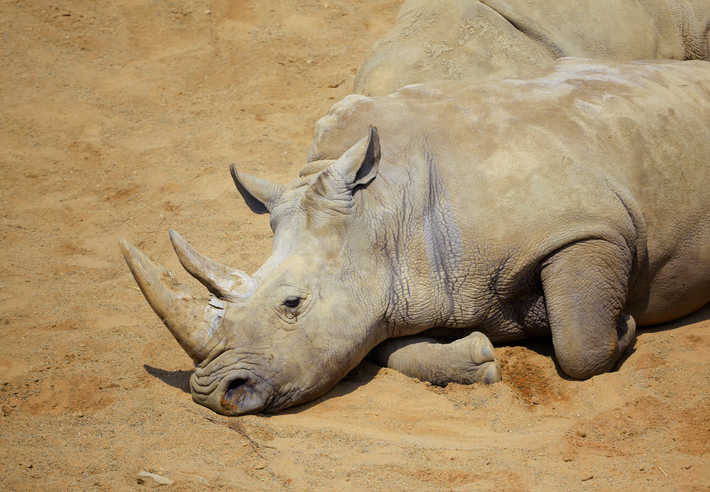Free Trade Agreements have the power to boost economies and reduce poverty. But if poorly designed and enforced, they risk destroying the natural resources that underpin sustainable development. This blog explores what the African Continental Free Trade Area (AfCFTA) agreement means for Africa’s biodiversity.
Free Trade Agreements (FTAs), such as the African Continental Free Trade Area (AfCFTA), have the potential to significantly improve or harm biodiversity conservation, depending on their design and implementation.
Positive outcomes are possible. FTAs can prompt nations to adopt and enforce environmental regulations aligned with international agreements like the Convention on Biological Diversity (CBD) and the Convention on International Trade in Endangered Species of Wild Fauna and Flora (CITES).
For example, the Treaty on the Functioning of the European Union (TFEU), which includes the legal basis for free trade between EU member states, also stipulates that EU environmental policy shall promote “measures at international level to deal with regional and worldwide environmental problems“.
However, concerns arise when economic priorities overshadow environmental considerations. Industrial expansion in sectors such as agriculture and mining risks deforestation, soil erosion, and water pollution.
AfCFTA provisions with regards to biodiversity
Emerging studies indicate that the AfCFTA would increase trade among members, boost the continent’s economic output, and reduce poverty levels. For instance, the World Bank indicates that the agreement would increase the continent’s real GDP by 7%, translating to an additional income level for Africa of $450 billion by 2035. Similarly, the value of the continent’s exports could reach $560 billion by 2035, and the value of intra-Africa trade could rise by about 29%.
While the projections for increased trade, economic growth, and poverty reduction under the AfCFTA are promising, it’s important to critically evaluate its potential environmental impacts, particularly on biodiversity.
Despite Africa’s rich and diverse ecological resources, and the role they play in supporting sustainable development on the continent, the AfCFTA makes very limited provisions for the environment, including the sustainable use and conservation of biodiversity.
These provisions are narrowly enshrined in the AfCFTA protocols on Trade in Goods, Trade in Services, and Dispute Settlement. The provisions allow State parties to determine their own national policies for implementing the agreement, including environmental policies. While the provisions encourage states to prioritize environmental protection and sustainable development, they lack explicit clauses or strong commitments to these goals, and states are not legally bound to protect the environment, including biodiversity.
Without any explicit clauses for the protection and sustainable use of biodiversity in the agreement, the AfCFTA might increase economic incentives to exploit natural resources unsustainably, exacerbating the negative impacts on biodiversity and ecosystems.
How have other free trade agreements affected biodiversity?
Research indicates that trade liberalization more broadly [TK1] can both negatively and positively impact biodiversity.
On the positive side, trade liberalization can facilitate the transfer of technology, knowledge, and best practices related to sustainable agriculture, forestry, and fisheries. This can lead to the adoption of more environmentally friendly practices, such as agroforestry techniques, sustainable harvesting methods, and ecosystem-based fisheries management.
On the other hand, the North American Free Trade Agreement (NAFTA), for instance, contributed to deforestation in Mexico, as agricultural production and logging activities expanded to meet export demands. The NAFTA ran from 1994 to 2020 and included the United States, Canada, and Mexico. It increased agricultural trade and industrial development, but its environmental side agreements were criticized for being weak and ineffective in addressing biodiversity loss and environmental degradation.
Various FTAs negotiated by the EU have also faced criticism for their environmental impacts. The latest, the EU-Mercosur (Argentina, Brazil, Paraguay, and Uruguay) trade agreement negotiations continue to face headwinds due to concerns about deforestation in the Amazon rainforest due to increased demand for agricultural products, such as beef and soy.
These global examples should be valuable lessons for policymakers and stakeholders involved in negotiating and implementing the AfCFTA, helping them ensure that economic growth and trade expansion do not come at the expense of environmental sustainability and ecosystem health.
The AfCFTA’s potential impact on Africa’s biodiversity
The potential environmental impacts, particularly on biodiversity, of the AfCFTA include:
Resource extraction and deforestation: Trade liberalization policies in Africa have often led to increased and unsustainable exploitation of natural resources. The AfCFTA-induced expansion of extractive industries, such as mining and logging, to meet increased demand for raw materials may accelerate deforestation, soil degradation and water pollution – further threatening biodiversity hotspots. Unsustainable resource extraction practices can exacerbate habitat destruction and biodiversity loss.
Intensified agriculture: The anticipated increase in agricultural production to meet growing demand within the AfCFTA framework may lead to the expansion of agricultural land at the expense of natural habitats. Intensified agricultural practices, including the use of agrochemicals and monoculture farming, can degrade soil quality, decrease biodiversity, and contribute to ecosystem degradation.
Climate change implications: The intensified economic activities facilitated by the AfCFTA could exacerbate climate change through increased greenhouse gas emissions, deforestation, and land-use change. Climate change poses significant threats to biodiversity by altering habitats, disrupting ecosystems, and exacerbating species extinction rates.
Dietary changes: The AfCFTA’s positive impacts on economic wellbeing may suggest overall benefits. However, we must also be prepared for negative environmental impacts linked to higher living standards, such as changes in dietary preferences. In Nigeria, for instance, a survey by WildAid showed that increased welfare is a factor driving urban demand for wild meat, such as pangolins and antelopes. Wild meat trade directly threatens wildlife by reducing the population of endangered species, as evident in the Peruvian Amazon, West African protected area, and Tanzania national parks, among others.
Conclusion
Strategic measures are crucial to ensuring that FTAs like the AfCFTA promote sustainable development and biodiversity conservation. These include the robust enforcement of existing environmental regulations, transitioning to sustainable trade practices, and designing agreements with strong environmental provisions.
Weak enforcement of environmental regulations and inadequate safeguards within the AfCFTA framework may fail to mitigate the adverse environmental impacts of increased trade and economic activity.
It is equally vital to include local communities in decision-making processes, fostering a holistic approach to biodiversity conservation within the framework of FTAs.
Without stringent environmental standards and enforcement mechanisms, unsustainable practices could prevail, exacerbating environmental degradation and biodiversity loss.








